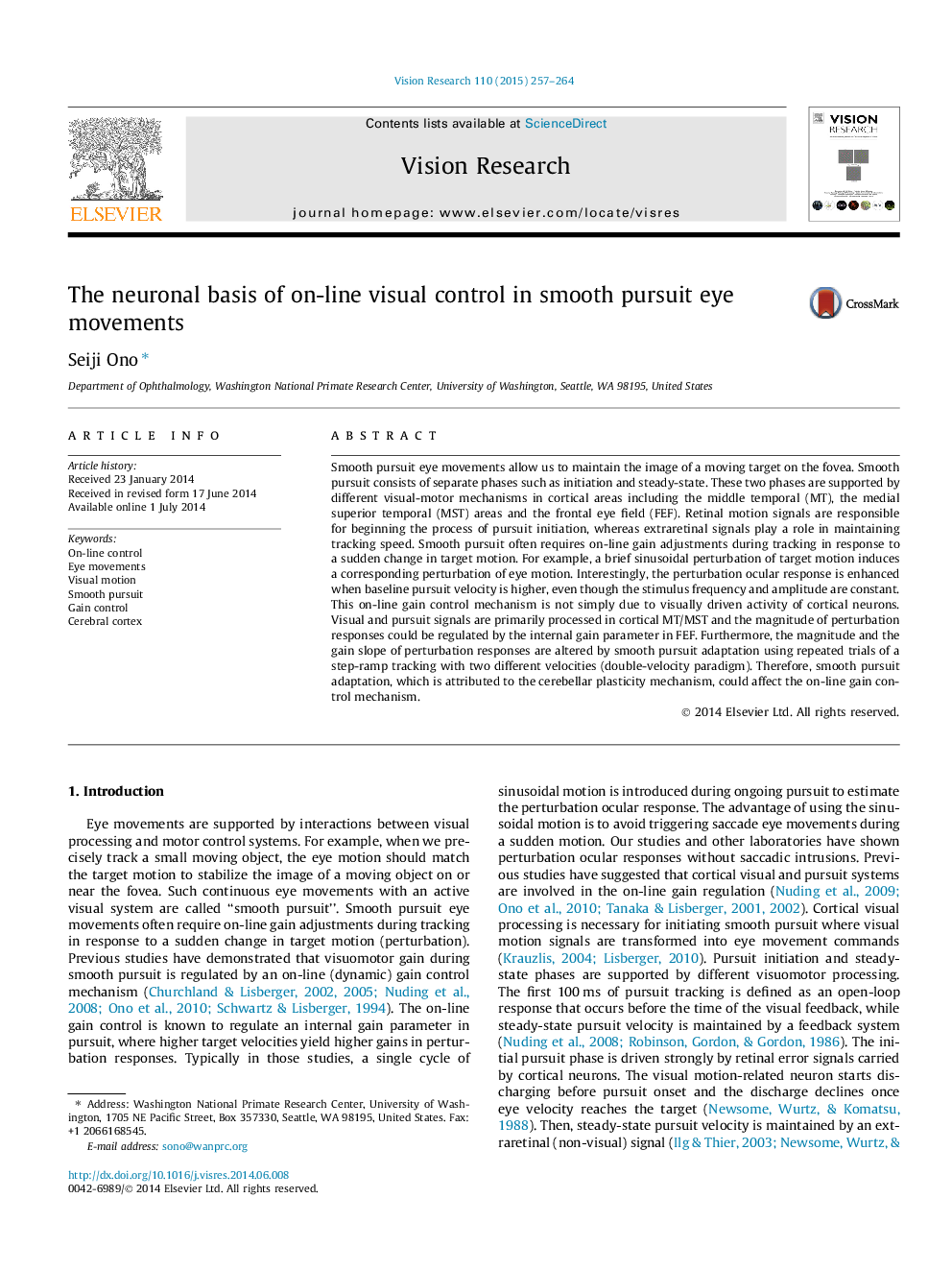| کد مقاله | کد نشریه | سال انتشار | مقاله انگلیسی | نسخه تمام متن |
|---|---|---|---|---|
| 6203194 | 1603185 | 2015 | 8 صفحه PDF | دانلود رایگان |
- Cortical visual and pursuit neurons play a role in on-line gain control in smooth pursuit.
- Smooth pursuit adaptation affects on-line gain control mechanisms.
- Cerebello-thalamo-cortical pathways are involved in modulating internal gain parameters.
Smooth pursuit eye movements allow us to maintain the image of a moving target on the fovea. Smooth pursuit consists of separate phases such as initiation and steady-state. These two phases are supported by different visual-motor mechanisms in cortical areas including the middle temporal (MT), the medial superior temporal (MST) areas and the frontal eye field (FEF). Retinal motion signals are responsible for beginning the process of pursuit initiation, whereas extraretinal signals play a role in maintaining tracking speed. Smooth pursuit often requires on-line gain adjustments during tracking in response to a sudden change in target motion. For example, a brief sinusoidal perturbation of target motion induces a corresponding perturbation of eye motion. Interestingly, the perturbation ocular response is enhanced when baseline pursuit velocity is higher, even though the stimulus frequency and amplitude are constant. This on-line gain control mechanism is not simply due to visually driven activity of cortical neurons. Visual and pursuit signals are primarily processed in cortical MT/MST and the magnitude of perturbation responses could be regulated by the internal gain parameter in FEF. Furthermore, the magnitude and the gain slope of perturbation responses are altered by smooth pursuit adaptation using repeated trials of a step-ramp tracking with two different velocities (double-velocity paradigm). Therefore, smooth pursuit adaptation, which is attributed to the cerebellar plasticity mechanism, could affect the on-line gain control mechanism.
Journal: Vision Research - Volume 110, Part B, May 2015, Pages 257-264
